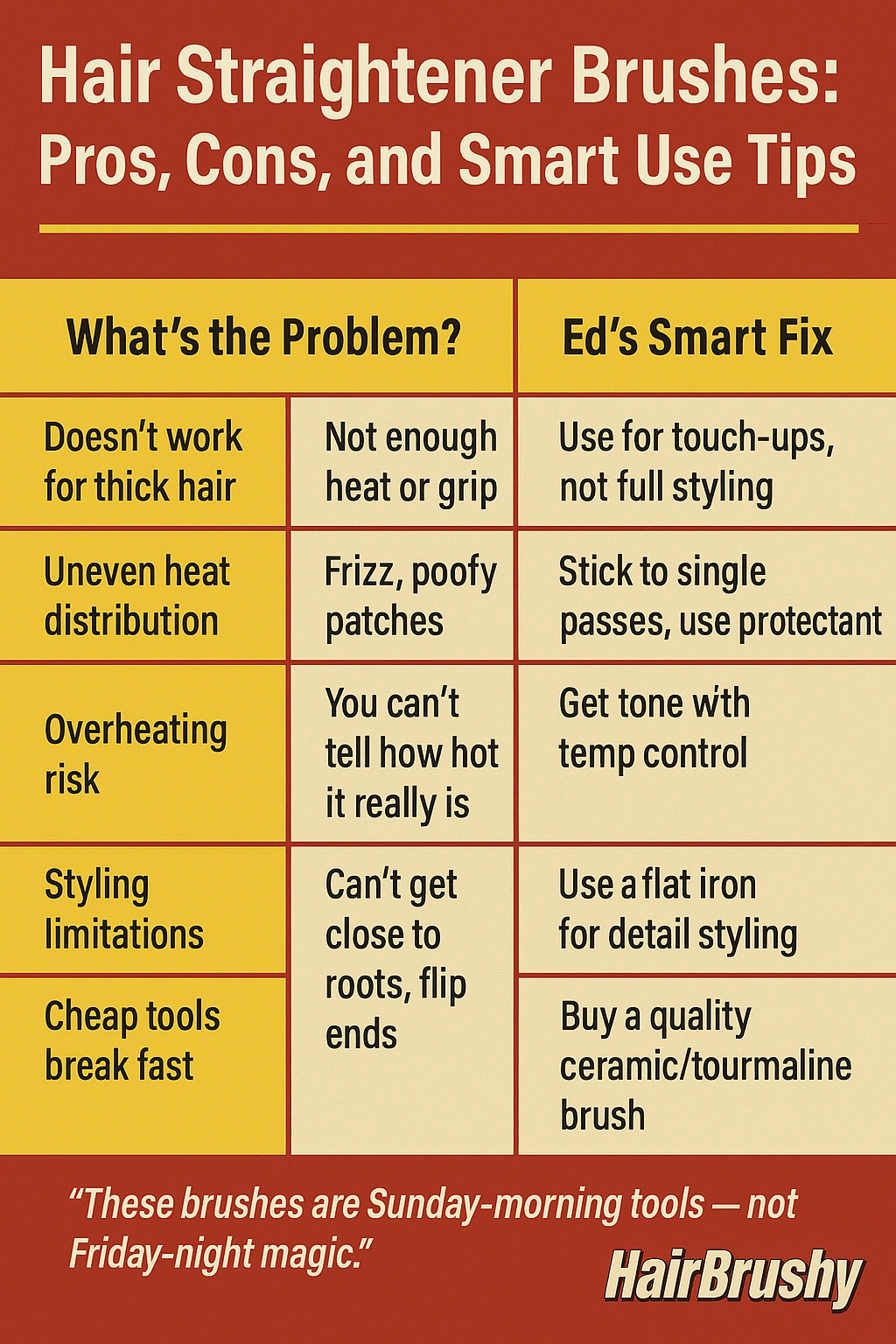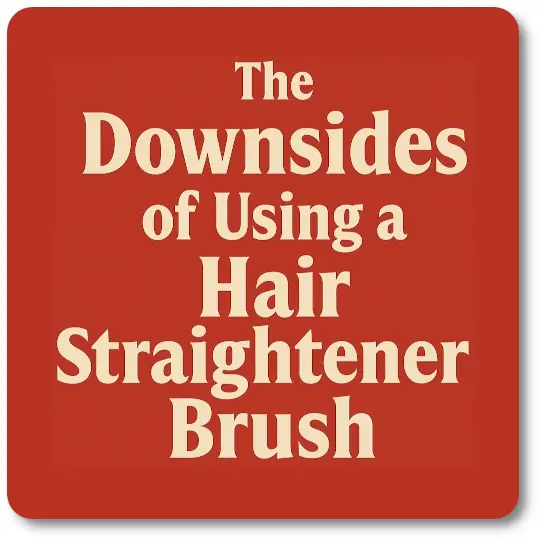The Real Downsides of Hair Straightener Brushes (And What to Do Instead)
Alright folks, let’s talk about something that’s been buzzing all over your feed hair straightener brushes. They promise the ease of brushing with the magic of straightening. Sounds like a dream, right? But before you toss your flat iron and go all-in, let me break down the real talk. Because as handy as these tools can be, there’s a flipside that no one’s telling you about.
| Feature/Factor | What’s the Problem? | Ed’s Smart Fix |
|---|---|---|
| Doesn’t work for thick hair | Not enough heat or grip | Use for touch-ups, not full styling |
| Uneven heat distribution | Frizz, poofy patches | Stick to single passes, use protectant |
| Overheating risk | You can’t tell how hot it really is | Get one with temp control |
| Styling limitations | Can’t get close to roots, flip ends | Use flat iron for detail styling |
| Cheap tools break fast | Snagging, overheating, low life span | Buy a quality ceramic/tourmaline brush |
I’ve tested more hair tools than most folks test coffee flavors, and trust me not everything with a plug and a pretty box deserves a spot on your vanity. So here’s the deal on the downsides of straightener brushes and how to use them smartly.

1. They Don’t Work Well on All Hair Types
Let’s start with the obvious: straightener brushes are not miracle workers. If you’ve got super thick, coarse, or tightly curled hair, most of these brushes don’t pack enough heat or grip to truly straighten your strands.
Ed’s Tip: For curly or coily hair, you’ll likely still need a blowout or flat iron to get that sleek finish. The brush might be good for touch-ups, but don’t expect salon-smooth results on its own.
2. Uneven Heat Distribution Can Be a Buzzkill
Unlike flat irons that clamp and heat both sides evenly, these brushes only heat one side the bristle side. That means you’re not getting consistent tension or heat across your entire strand, which can leave your hair half-done or worse, still poofy in spots.
Real talk: It’s hard to control the pressure, and that uneven tension? That’s frizz just waiting to happen.
3. You Might Use Too Much Heat Without Realizing
Because you don’t feel the heat like with a flat iron, it’s easy to overdo it. You keep going over and over the same section thinking, “Why isn’t this getting straight?” Meanwhile, your ends are slowly turning to straw.
Solution: Always use a heat protectant (non-negotiable), and if your brush doesn’t have adjustable heat, toss it. You want a tool you can dial in based on your hair type.
4. Styling Control Is Limited
Need to get close to the roots? Want to add a flip or curl at the ends? Tough luck. Most straightening brushes are big, chunky, and don’t give you the precision a flat iron does.
Use Case: Great for smoothing out second- or third-day hair. Not ideal for creating detailed styles or getting super sleek.
5. Cheap Ones? Just Don’t.
There’s a big quality gap in this market. The cheap ones? They overheat, pull your hair, and often stop working after a couple of months. I’ve tested a few and they’re junk. No sugarcoating here.
Invest in a brand you trust. Look for tourmaline or ceramic bristles, adjustable temp, and auto shut-off. Don’t skimp your hair’s worth more than $29.99 Amazon lightning deals.
When They Do Make Sense
I’m not saying these brushes are totally bad. For fine to medium hair that just needs light smoothing, they’re a time-saving godsend. They’re great for folks who want something quick before work, or for teens just learning to style their hair.
Perfect for:
- Smoothing frizz on day two or three hair
- Light touch-ups before heading out
- People who want low-maintenance tools
Bottom Line, Folks
Straightener brushes have their place just not as a full-on replacement for your flat iron or blowout routine. Think of them as the lazy Sunday of hair tools: comfy, convenient, but not red carpet ready.
So before you get sold on influencer hype, ask yourself: What do I really want from a tool? If it’s sleek, pin-straight hair that lasts all day, stick to your flat iron. But if you just want to tame the fluff and smooth things out in five minutes, a good-quality brush might be your new best friend.
Stay smooth, stay smart Ed out.

